Lidar At Its Best
Whether for monitoring areas, facades or perimeters, when it comes to security-related building automation, SICK laser scanners (such as the LMS141) have established themselves as dependable sensor systems to detect persons and to monitor buildings. In addition to use in video management systems, in this time of the coronavirus pandemic, they also support the counting of persons and detection of their direction, as well as checking that they maintain social distancing.
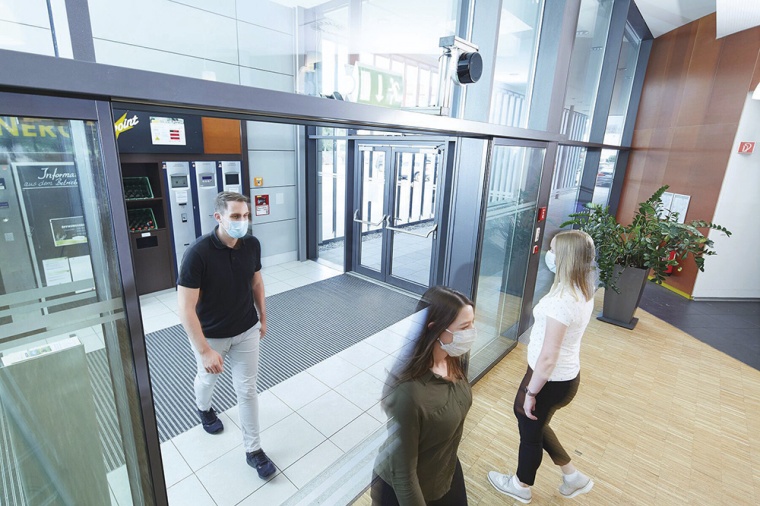
Police statistics for 2017 recorded more than 71,000 burglaries in bureaus, offices, factories, workshops and warehouses and the total annual losses amount to several hundred million euros.
A prudent attitude and appropriate precautions, particularly the use of burglar alarms, can prevent losses or at least reduce their extent. Nevertheless, hardly any team of guards can keep an eye on everything all the time – and there are not many cameras that can provide a 100% guarantee that endangered areas can be ceaselessly and completely monitored. Laser scanners from SICK have proved themselves capable of detecting potential crimes early enough for security personnel to rapidly reach the crime scene without being noticed.
The portfolio of scanners includes many sensors for a variety of monitoring areas and detection speeds and – with the LMC12x for indoors and the LMC13x for outdoors. Integrated into video management systems to report attempted burglaries, they also detect dark bodies at night, and turn the cameras in the direction of the endangered area. They are thus capable of automatically tracking moving people from one laser scanner to the next, or from one camera to the next.
Laser scanners from SICK – more precisely, 2D and 3D Lidar sensors (Light Detection And Ranging) – also take on building automation tasks that ensure safe operational and emergency processes, for example in shopping malls or at airports. During this Covid-19 pandemic they help minimize the risk of infection by counting persons and detecting their direction of movement, as well as checking the maintenance of social distancing between them. Sick has developed special sensor apps for this purpose – People Counter and Distance Guard – for application-specific programming of the Lidar sensors.
Laser Scanners: Smart, with Reliable Detection and Secure Data
Whether for reporting break-ins or detecting people, laser scanners from Sick exploit their various technological capabilities in both tasks: monitored areas of up to 275° per device; ranges up to 120 meters; individually adjustable monitoring fields; reliable detection of dark objects in the dark; immunity against direct sunlight and deliberate dazzling. They also support smart burglar alarm concepts. The data preparation within the device does not lead to ‘big data’ because only relevant information is transmitted. This minimizes the communication and computing load within the video management system.
The ability to be integrated into the Ethernet-based bus systems of building automation, and the direct network communication with programmable cameras, enable up to ten different areas to be monitored with just one laser scanner and the simultaneous control of several cameras in the case of an alarm. In this way, several camera locations can be efficiently combined and visualized in the security center via the network. In terms of data protection and data security, laser scanners offer the advantage of anonymized detection: no personally attributable data is collected during the simple detection of a person’s presence.
Intrusion Detection: From Outside to Inside
Reliable protective monitoring against break-ins, theft and vandalism ideally begins as early as possible. In other words, not directly in front of the building to be protected, but on the open areas and perimeters before it. Typical ‘from outside to inside’ tasks are:
- monitoring fences and walls,
- the detection, camera guidance, and tracking of persons or objects on open spaces,
- protecting facades and roofs,
- monitoring ceilings and breakthrough protection,
- inspecting gates, doors, and passageways,
- the individual protection of objects, e.g. paintings or other exhibits in museums.
Despite the variety of these tasks, an innovative approach has become successfully established with the technology of the measuring Lidar sensors from SICK. These laser scanners are very well suited for area monitoring, both indoors and in open spaces. Their field monitoring, as well as signal and alarm outputs, can be flexibly adapted to operational requirements. Deliberate and accidental false alarms are almost impossible thanks to intelligent Multi-Echo technology. The scanners are largely immune against vandalism, sabotage and tampering, and require minimum installation effort thanks to their single-device design.
Detection of Persons Using Lidar Sensors
In addition to laser scanners to signal break-ins and alarms, building automation also focuses on solutions to optimize processes, as well as to comply with technical and organizational safety regulations. Tasks include the energy-optimized control of heating, air con-ditioning and ventilation equipment, the temporary closing off of overcrowded areas, floors or parking levels, or the evacuation measures to be implemented if the worst comes to the worst. In addition to its 2D Lidar sensors, Sick has therefore also developed a va-riety of 3D Lidar sensors. These multi-layer scanners enable the detection of persons individually or in groups, their counting, and recognition of their direction of movement – both indoors and outdoors.
In response to the Covid-19 pandemic, SICK has also developed innovative sensor solutions based on its existing and proven portfolio to efficiently implement measures against the virus spreading. Combining the 2D and 3D Lidar sensors with the People Counter and Distance Guard Sensor Apps helps people to maintain the recommended minimum distance to one another in public and in pre-defined areas. The People Counter – based on the hardware of the MRS1000P 3D Lidar sensor – is a sensor app that can detect and differentiate persons on the basis of their contours. The direction of movement of persons can be clearly seen thanks to the sensor’s four layers. The combination of several sensors allows even larger areas with different entrances and exits to be covered.
The Distance Guard Sensor App is designed for use in surroundings in which current recommended social distancing should be maintained between people, whereby a TiM series 2D Lidar sensor determines the distance between two persons who are warned by an optical or acoustic signal as soon as they stop main-taining the defined minimum separation. And because neither the People Counter nor the Distance Guard process personal information, companies that use SICK SSensor Apps to ensure maximum utilization of space and maintenance of the minimum distance between people not only comply with hygiene regulations but also data protection legislation.
The Author
Jörg Kibbel
Product Manager Lidar
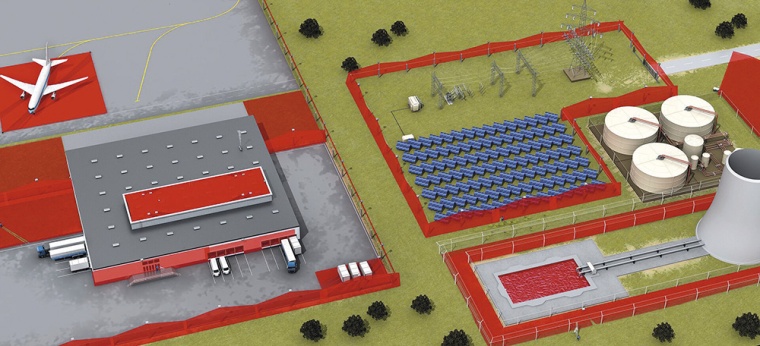
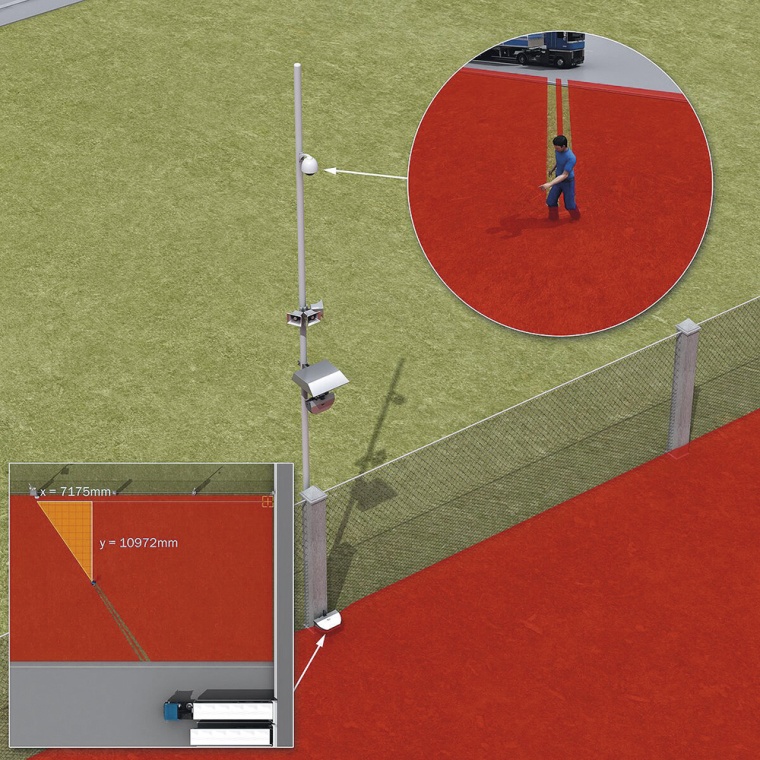
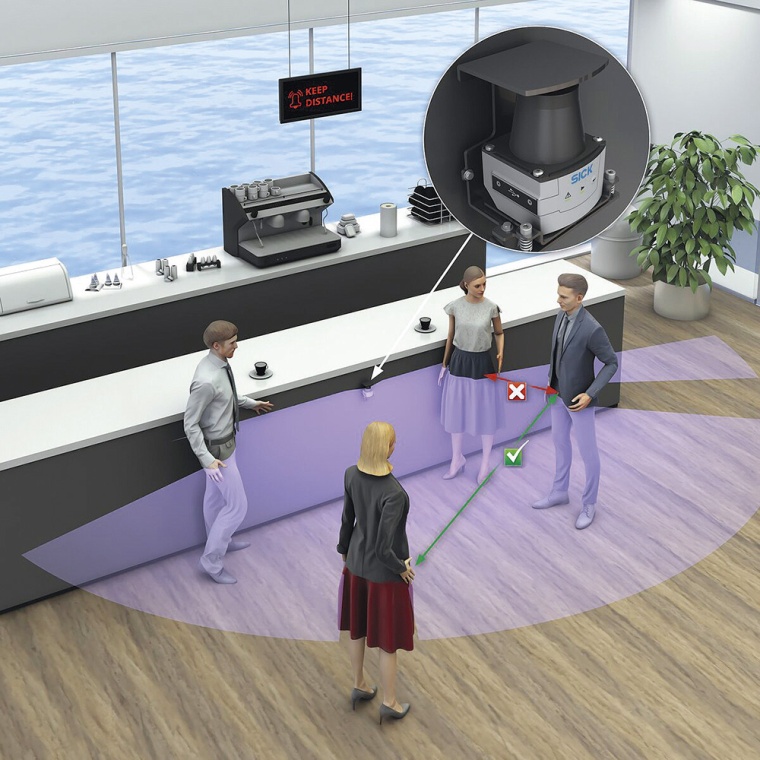
Business Partner
Sick AGErwin-Sick-Str. 1
79183 Waldkirch
Germany
most read
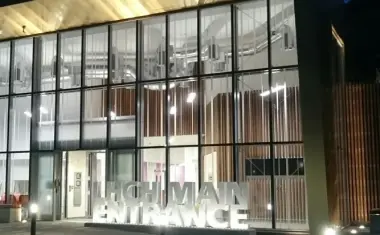
Liverpool Heart and Chest Hospital Transforms Security with Verkada’s Hybrid Cloud Technology
NHS Trust boosts safety and efficiency with Verkada’s cloud-managed cameras and AI-powered incident response


GIT SECURITY AWARD 2026 - The winners have been announced!
GIT SECURITY AWARD 2026: The best safety and security solutions of the year - now an overview of all winners

Integrated and Futureproof: Traka’s Next Chapter
Interview with Stefni Oliver on Traka’s Vision for the Future

The Benefits of AI-based Video Surveillance Solutions for Sports Venues
Dallmeier Interview: Artificial intelligence Makes Stadiums Smarter








